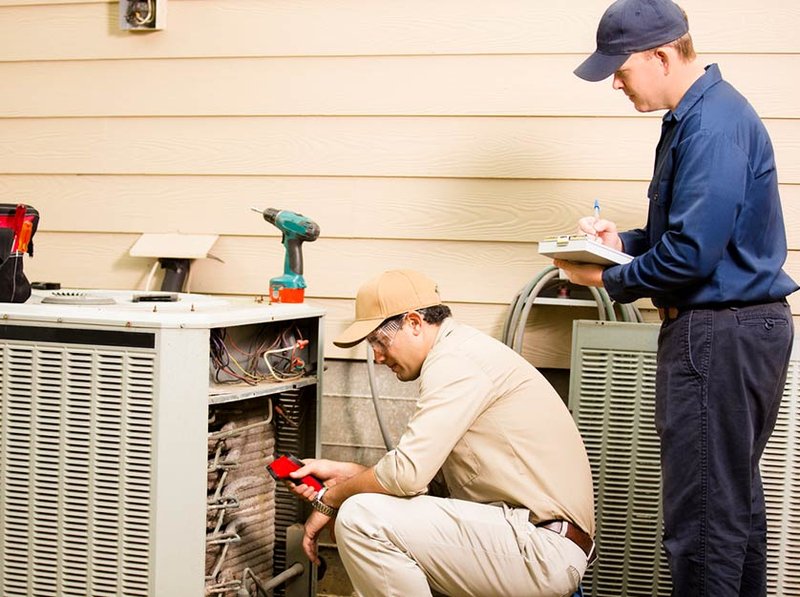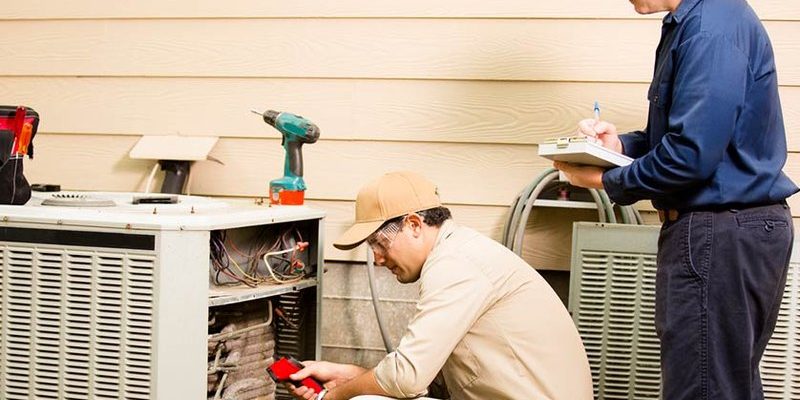
Let me explain: understanding what’s covered, what’s not, and what steps to take if you ever need to use the warranty can make the difference between a simple fix and a major headache. Carrier’s warranty isn’t just paperwork tucked away in a drawer—it’s there to help you if your system acts up, breaks down, or even just gets a little quirky. Let’s dig into the nuts and bolts of what Carrier’s HVAC warranty really covers (and what it doesn’t).
The Basics: What’s Included in a Carrier HVAC Warranty?
So, you’ve got a Carrier HVAC system, and you want to know what kind of safety net you actually have. The standard coverage—think of it as your basic umbrella—protects against problems that come from faulty materials or manufacturing mistakes. So, if your system conks out because a part was installed wrong at the factory or a component just wasn’t up to par, you’re covered.
Most new Carrier residential HVAC systems come with a **5- or 10-year limited parts warranty**. Registration is key—if you register your system within 90 days of installation (it’s usually a quick online process), you’re eligible for the full coverage period. Forget to register? You might still have warranty protection, but it’ll be the shorter five-year version instead. That’s a bit like forgetting to mail in a rebate—easy to overlook, but you’re leaving something valuable on the table.
Here’s what’s typically included:
- Major components like compressors, evaporator coils, and condensers
- Factory-installed parts—think blower motors, circuit boards, or fans
- Specific accessories (as long as they’re original and installed by a Carrier dealer)
Just remember, this warranty covers parts only. Labor costs, like paying a technician to actually fix or install those parts, usually aren’t included under the standard Carrier warranty. That’s a common “aha!” moment, so don’t get caught off guard.
What Isn’t Covered by Carrier’s HVAC Warranty?
Here’s the thing: a warranty isn’t a magic “everything’s free” card. Carrier’s warranty is strong, but it does have limits. Some problems just fall outside the safety net.
For starters, labor isn’t covered under the standard warranty. That means if something breaks, Carrier supplies the part, but you’re on the hook for any technician or service call fees. It’s like getting a free pizza topping, but still paying delivery. Some dealers offer additional labor warranties, but those are separate and often cost extra.
There are other common exclusions:
- Improper installation—if your HVAC wasn’t installed by a certified Carrier dealer, you might lose coverage.
- Normal wear and tear—things like dirty filters, clogged drains, or breakdowns due to lack of regular maintenance are not covered.
- Environmental factors like floods, lightning strikes, or pest damage. Carrier’s warranty doesn’t cover acts of nature or accidental damage.
- Non-original parts—if you’ve tried to save a buck with generic parts or DIY fixes, coverage can be voided.
Carrier is pretty clear: stick to the rules, use certified parts and pros, and keep up with regular maintenance. If you don’t, you might find yourself stuck troubleshooting that code blinking on your thermostat all by yourself.
How to Register Your Carrier HVAC Warranty
Honestly, registering your Carrier HVAC warranty is one of those steps people skip—like flossing, or reading the actual terms on a phone app. But it matters! Without registration, you could be missing out on several extra years of protection.
Here’s how to do it:
- Find your system’s model and serial numbers. These are usually on the unit itself (check the side panel or inside the access door).
- Head to Carrier’s official warranty registration page. If your installer doesn’t handle it for you, you can complete the process online in a few minutes.
- Fill in your info—name, address, installation date, and details from your product label.
- Submit and save your confirmation email. This is your backup if there’s ever any confusion down the road.
Pro tip: If you move, let Carrier or your local dealer know. Some warranties may transfer to new owners, which can add value if you’re ever selling your house.
What Happens When You Need Service?
Picture this: it’s the hottest week of August, and your A/C stops working. You see a weird error code on your Carrier thermostat and a rising sense of panic. Don’t worry—this is where knowing your warranty pays off.
The first step is to contact a certified Carrier dealer. They’ll do some quick troubleshooting and decide if the issue falls under the warranty. If a covered part needs replacing, the dealer will sync with Carrier to get approval and order the necessary parts.
Here’s what the service process typically looks like:
- Diagnostic visit: The dealer checks your system to pinpoint the problem.
- Confirmation: If the part is covered, Carrier supplies it at no charge—and the dealer installs it.
- Labor charges: You usually pay for the technician’s time, unless you have a separate labor warranty.
A Carrier warranty won’t cover a system reset, battery replacement, or regular maintenance calls—so don’t expect the warranty to help if it’s something simple like a blown fuse or a tripped breaker.
Always save your original installation paperwork and warranty confirmation. Dealers and Carrier both use this info to verify coverage and speed things up. If you’re ever unsure, ask your dealer to walk you through the process—that’s what they’re there for.
Optional Extended Warranties and Labor Plans
Now, let’s talk about extras. Carrier knows basic warranty coverage doesn’t fit everyone’s needs, so they offer extended home warranties and labor protection plans. Think of this as moving from the old-school umbrella to a full-on raincoat and boots.
A few key options:
- Carrier Extended Warranty Plans: These add years to the basic coverage and can even include labor for repairs, not just the parts. You usually need to buy these soon after installation, so don’t procrastinate if you’re interested.
- Dealer Labor Warranties: Some Carrier dealers offer their own warranties covering labor on top of Carrier’s parts warranty. Coverage and price varies, so ask your installer what’s available.
- Third-party Home Warranties: Some homeowners choose a larger home warranty service that covers all major appliances, including HVAC. These policies differ wildly—read the fine print carefully!
Are these upgrades worth it? If you like the peace of mind that comes from not worrying about out-of-pocket repair bills, it’s something to consider. If you’re handy, or don’t mind a little risk, sticking with the basic Carrier HVAC warranty might be just fine for you.
Comparing Carrier Warranty With Other Brands
You might be wondering, “How does Carrier’s warranty stack up against other big names?” That’s a smart question. Carrier is known for reliable, long-lasting systems, but their warranty is pretty standard in the HVAC world.
Let’s break it down:
- Carrier: Typically offers a 5- or 10-year limited parts warranty, with longer coverage if you register within 90 days. Labor is extra, unless you buy a supplemental plan.
- Trane & Lennox: Both have similar 10-year limited parts warranties for registered systems, and neither covers labor in the standard warranty. Lennox sometimes has better options for heat exchanger coverage.
- Goodman: Known for a more robust 10-year parts warranty, and some models include lifetime compressor coverage, but again, labor isn’t typically included.
Honestly, warranties are rarely the deciding factor when choosing a system—it usually comes down to dealer reputation, installation quality, and your budget. But knowing what’s on offer can help you ask better questions and avoid any surprises later on.
How Maintenance Impacts Your Carrier Warranty
Let me be blunt: skipping HVAC maintenance is like never changing your car’s oil—you might be fine for a while, but eventually, you’ll regret it. Carrier’s warranty clearly says you have to properly maintain your system to keep coverage intact. If a failure happens because you neglected routine care, the warranty can be voided.
What counts as “proper maintenance?”
- Regular filter changes
- Clearing debris and keeping vents open
- Annual tune-ups by a certified technician
Keep a record of all service visits and maintenance—you don’t need to be a librarian, but receipts, invoices, or a simple logbook can help if you ever need to prove you’ve done your part. If you’re ever unsure about a warranty claim, your maintenance log is ammunition.
Making the Most of Your Carrier HVAC Warranty
Using your Carrier HVAC warranty isn’t rocket science, but you do need to be a little proactive. Register your product, keep everything clean and well-maintained, and don’t hesitate to call a Carrier pro if something seems off—especially if you see weird error codes or the system just won’t sync. If you want more peace of mind, talk to your installer about labor coverage or extended warranty plans.
Remember, Carrier’s warranty is there to protect you from unexpected repair costs caused by manufacturer issues—not from the everyday stuff or things that go wrong because of skipped maintenance or DIY battery swaps. Think of it as a partnership: Carrier covers their end (the parts), and you cover yours (the care and the labor, unless you buy extra protection).
So, the next time your Carrier system hums quietly in the background, you’ll know you’ve got some backup—just in case those “what if” moments strike. And if something ever does go wrong, you’ll be ready, not rattled.
